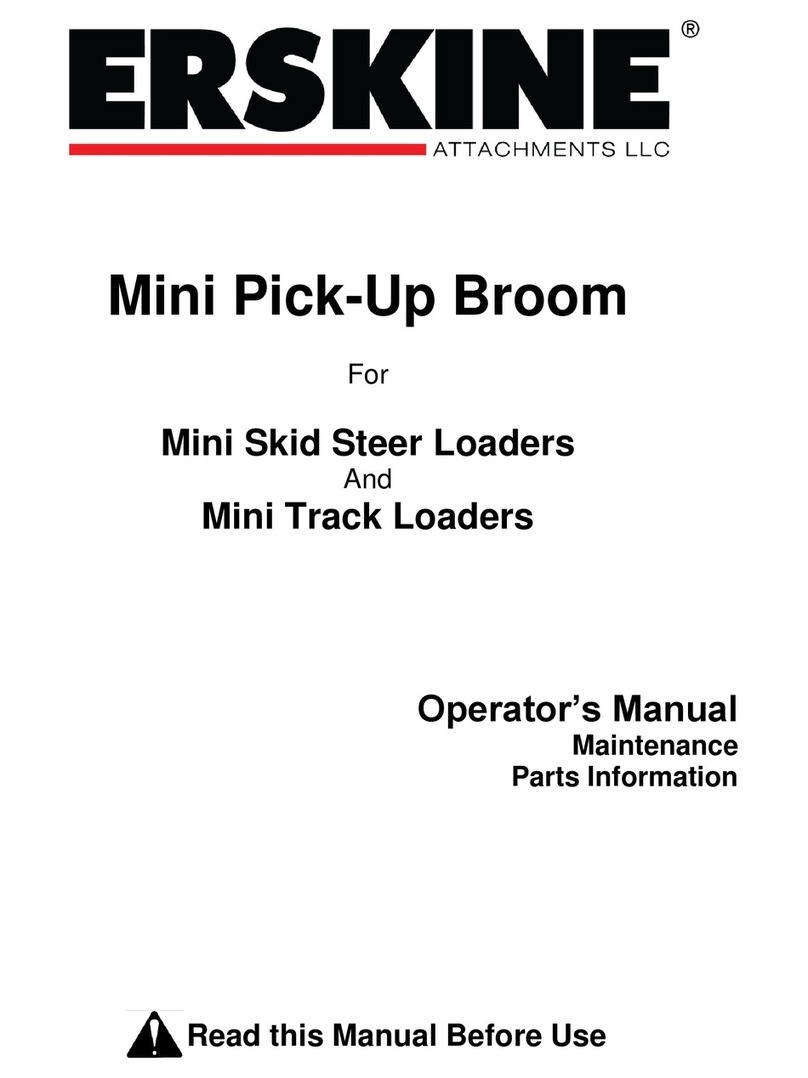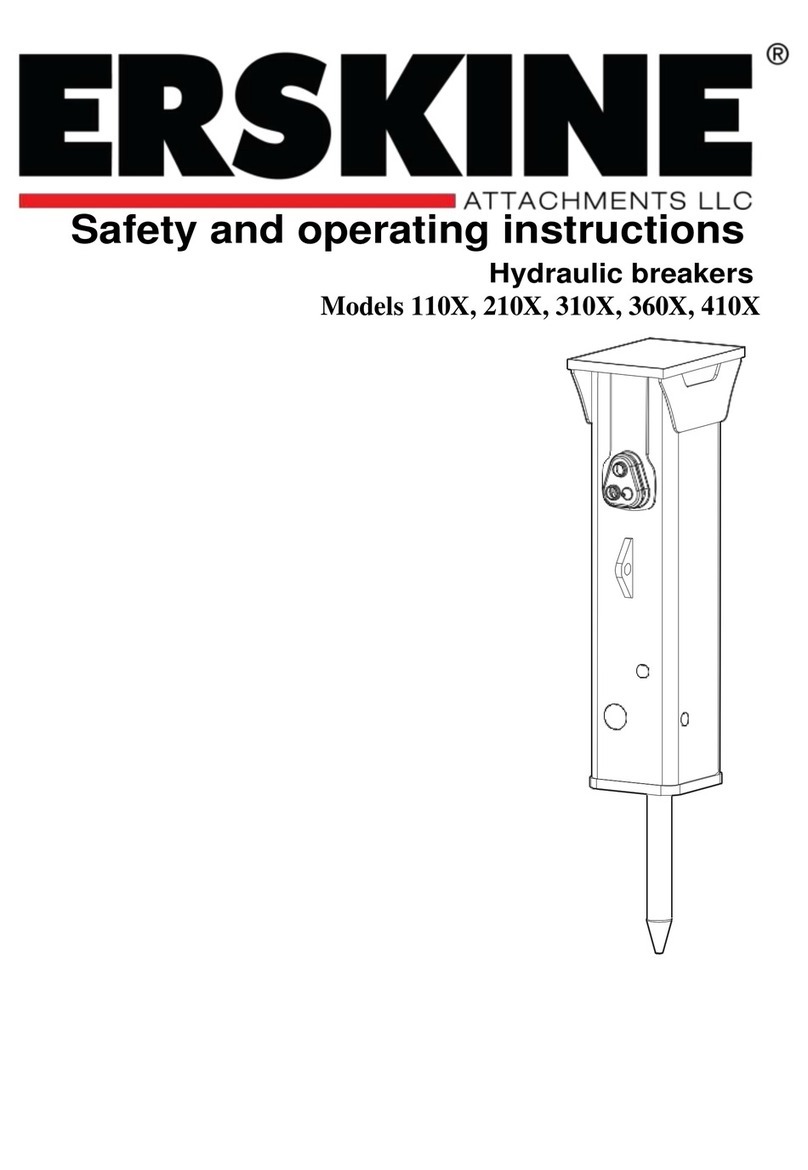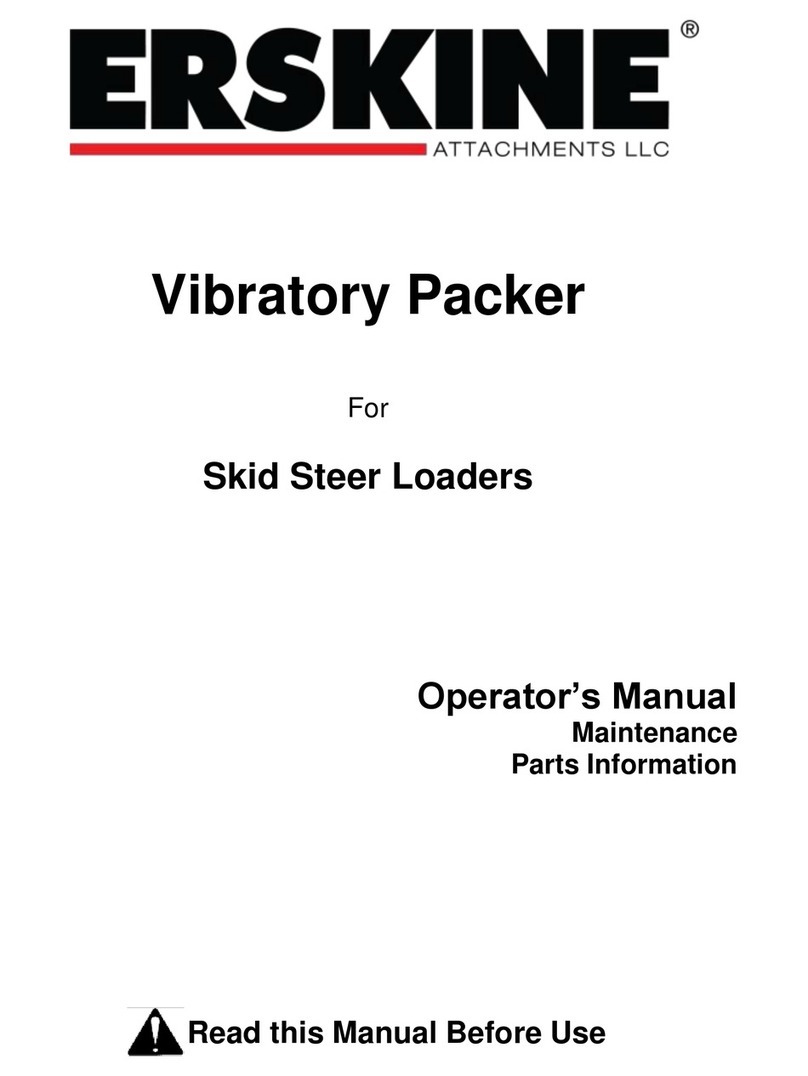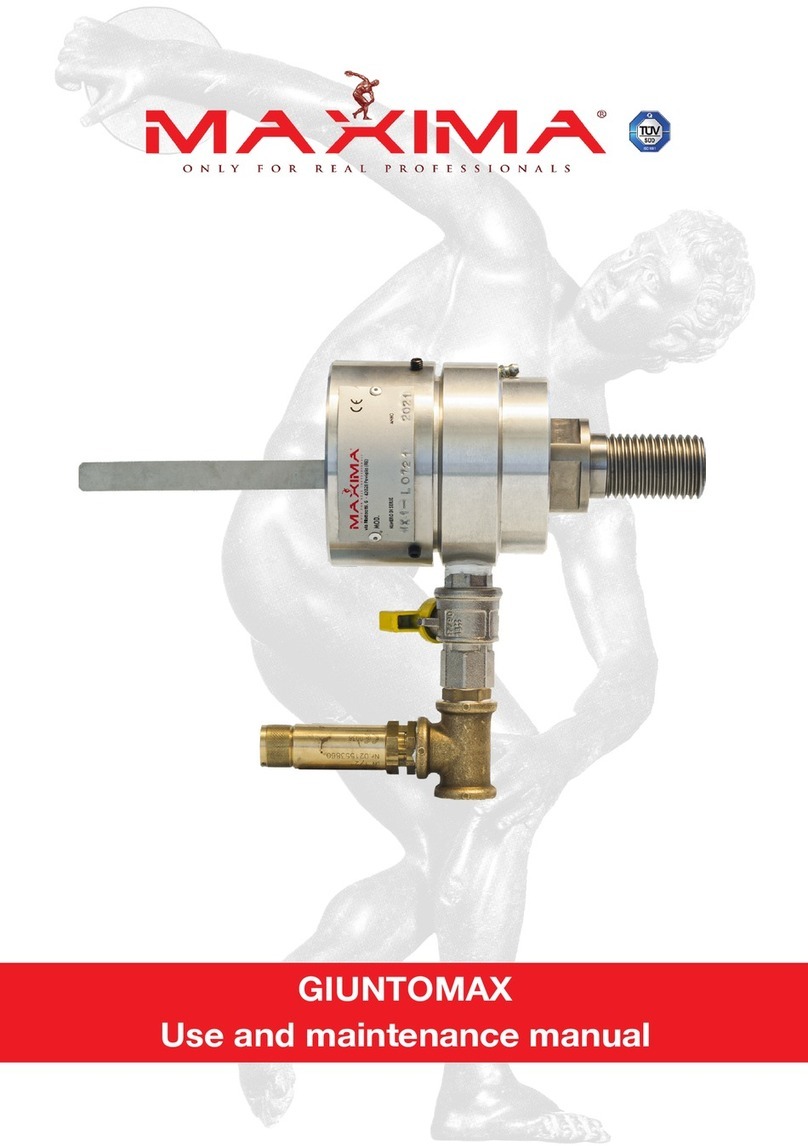To avoid serious injury or death,
keep people away from the loader and attachment
when in use. The attachment can drop trees and
limbs in unpredictable directions. Make sure
there are no people, power lines, buildings, or
other objects that could be in the fell zone. Never
cut trees that could fall into these objects. Loader
must be equipped with approved Forestry Door,
Forestry Kit, and Level II Falling Object Protective
Structure (FOPS) Kit.
IMPORTANT: Before operating the attachment,
perform the service schedule for routine maintenance.
IMPORTANT: Certain materials can wrap around
parts of the attachment or cause other damage. Avoid
contacting materials like: metal wire, hoses, ropes,
tarps, mattresses, rugs, or plastics.
IMPORTANT: Certain land features can cause
damage. Inspect the cutting area and avoid
obstructions like drop offs, holes, rocks, debris, etc.
1. With the operator in the seat of the loader, the
seat belt fastened and the seat bar lowered (if
so equipped), start the engine.
2. With the loader boom lowered completely,
mulcher deck tipped back 0 to 10 degrees and
engine at low idle, activate the auxiliary
hydraulic system to start the disc rotation. Make
sure auxiliary hydraulic circuit is operating in the
High Flow mode. It can take up to 45 seconds
for the disc to spin up to full speed if starting
from a dead stop.
IMPORTANT: The attachment is designed to
operate from 33 to 45 gpm. Operating at higher flow
rates can cause serious damage to the mulching
head and will void the warranty.
IMPORTANT: Do not operate the attachment if
excessive vibration is present. Serious damage can
occur. Check to make sure that there is not debris
lodged between the teeth.
NOTE: Certain loaders may not operate in high flow
mode without a special wire harness. Others require
the control switches to be operated in a specific way.
It may also be necessary to switch the hose couplers
around to match your loader. (See loader’s
operator’s manual)
Mulching Trees Larger than 6”
1. First, you must decide if you can mulch the
standing tree as one piece, based on the trunk
diameter. If more than 6” diameter, use the
procedure below.
2. Cut the tree off between 0 and 3 feet above the
ground to minimize the chance of accidental
ingestion into the mulching chamber.
Always keep the attachment
low and slightly tilted back so that you are not
exposed to flying debris
3. Maintain pressure on the tree with the push bar
while you cut so the tree falls away from you.
4. Once on the tree has fallen, grind the remaining
standing portion using the teeth on the bottom of
the disc. Then proceed to mulch the limbs of the
tree either from the side or while straddling the
tree trunk.
5. For trees that are somewhat straight, you can cut
the top off and try to ingest that as one piece if it
is smaller than 6” diameter. To do this, straddle
the tree with the front of the deck angled down
slightly and drive forward while lowering the deck
onto the tree. Make sure you don’t try to ingest
such a large portion of the tree that it plugs the
mulcher. Keep the tree trunk between the 12
o’clock and 2 o’clock position on the disc for best
results.
6. For the trunk portion of the tree, use the teeth on
the bottom and edge of the disc to grind away
successive layers of material. You will need to
pause briefly after each cut to allow the disc to
speed up again. It usually works best to
approach the tree from the bottom end
NOTE: The type of wood being cut, available
horsepower and the ground conditions will determine
the best ground speed and cutting procedure.
IMPORTANT: While this attachment has been
designed to handle the extreme loads associated with
mulching whole trees, every machine has its limits.
Due to the large amount of spinning mass and high
speed of the disc, the operator must use care not to
ingest pieces of tree trunk larger than 10” diameter, as
this could overload the spindle. Any spindle damage
is considered to be the result of operator abuse, and
is not covered under warranty.
































